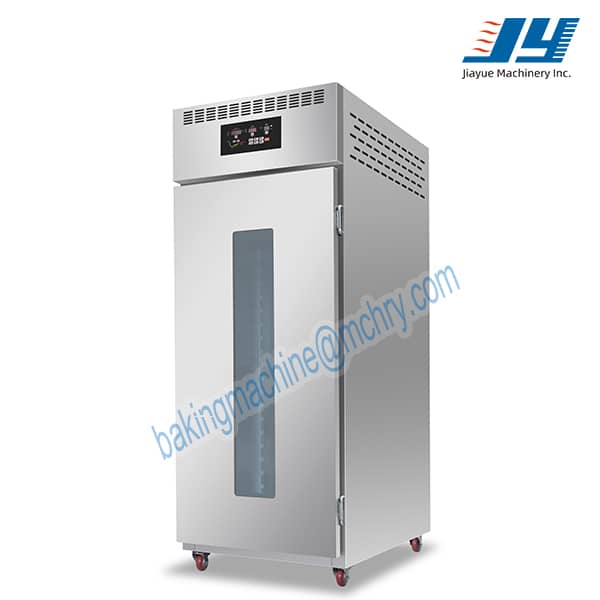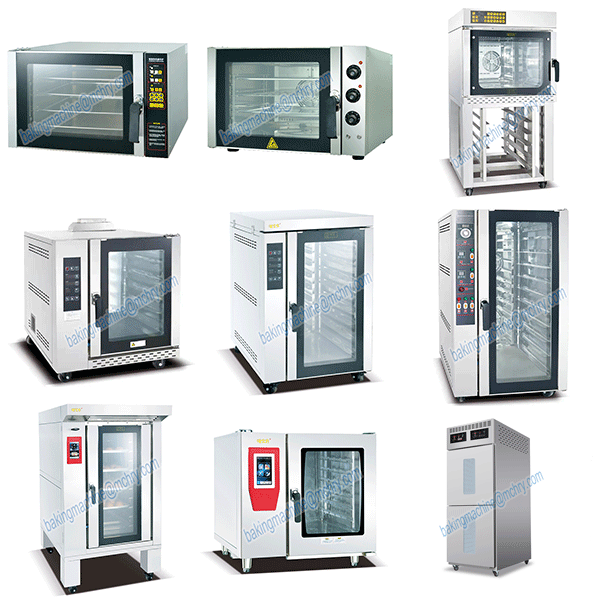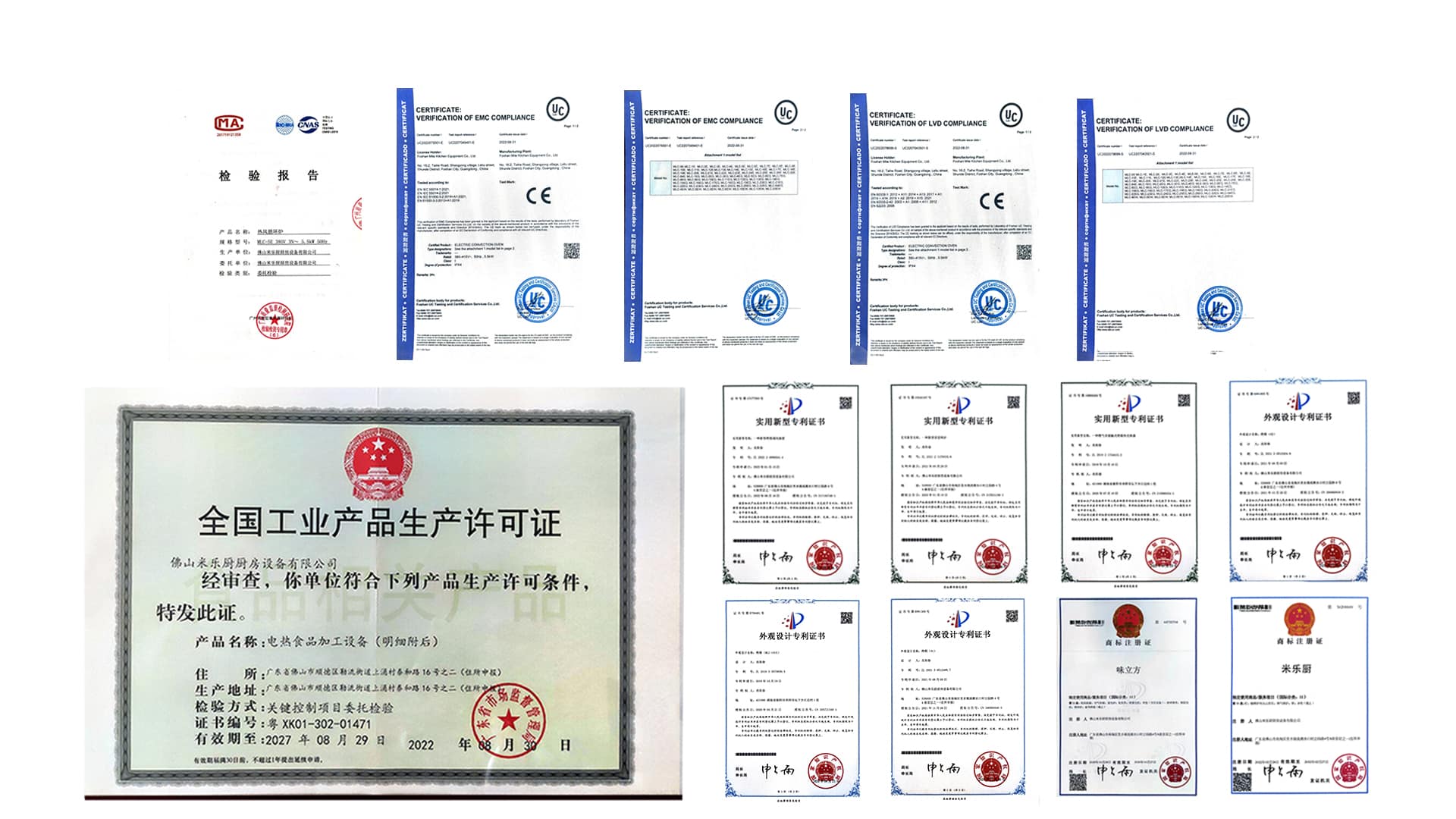Daily Maintenance and Care of Retarded Cooling/ Freezing Proofer
A retarded cooling/ freezing proofer is a crucial piece of equipment in bakeries, pastry shops, and commercial kitchens, playing a vital role in ensuring consistent quality of dough fermentation. To maintain its optimal performance, extend its lifespan, and ensure food safety, regular maintenance and care are essential. Here are some key aspects of daily maintenance and care for refrigerated freeze proofers from Guangzhou Jiayue Machinery.
1. Cleaning
Interior Cleaning: After each use, remove any dough residues, crumbs, or spills inside the proofer promptly. Use a soft, damp cloth or sponge with a mild, food – safe cleaning solution to wipe down the shelves, walls, and the floor of the chamber. Avoid using abrasive cleaners or steel wool, as they can scratch the interior surfaces, which may harbor bacteria over time. Rinse thoroughly with clean water and dry with a clean, dry cloth to prevent the growth of mold and mildew. Regularly, at least once a week, conduct a more thorough cleaning. This includes removing the shelves for a deeper clean, checking and cleaning the corners and crevices where debris may accumulate.
Exterior Cleaning: Wipe the exterior of the proofer daily with a soft cloth dampened with a mild cleaning solution to remove fingerprints, stains, and dust. This not only keeps the equipment looking presentable but also helps prevent the build – up of dirt that could potentially affect the operation of control buttons and other external components.
2. Door Seal Inspection
The door seal, also known as the gasket, is critical for maintaining the proper temperature and humidity inside the proofer. Check the door seal regularly for signs of wear, cracks, or damage. A damaged seal can cause cold air leakage, resulting in inconsistent temperatures and increased energy consumption. If you notice any issues with the seal, such as gaps or tears, replace it immediately. To test the seal’s effectiveness, you can perform a simple paper test. Close the door on a piece of paper and try to pull it out. If the paper slides out easily, the seal may not be tight enough.
3. Temperature and Humidity Calibration
Accurate temperature and humidity control are the core functions of a refrigerated freeze proofer. Periodically calibrate the temperature and humidity sensors to ensure precise readings. You can use a separate, reliable thermometer and hygrometer placed inside the proofer to compare with the readings on the equipment’s display. If there are significant discrepancies, refer to the user manual for instructions on how to recalibrate the sensors. In general, calibration should be done at least once a month, or more frequently if you notice inconsistent fermentation results.
4. Condensate Drainage System Maintenance
The refrigerated freeze proofer generates condensate during operation. A properly functioning condensate drainage system is essential to prevent water accumulation inside the unit, which can lead to mold growth and potential damage to the electrical components. Check the condensate drain regularly for blockages. If you notice water pooling at the bottom of the proofer, it may indicate a clogged drain. Clean the drain using a soft brush or a mixture of warm water and mild detergent. Flush the drain with clean water to ensure it is clear.
5. Ventilation System Check
Good ventilation is necessary for the efficient operation of the proofer’s refrigeration and heating systems. Ensure that the vents on the exterior of the proofer are not blocked by any objects, such as boxes, utensils, or other equipment. Regularly clean the vents to remove dust and debris that could restrict airflow. A blocked ventilation system can cause the proofer to overheat, leading to reduced performance and potential breakdowns.
6. Lubrication of Moving Parts
Some refrigerated freeze proofers may have moving parts, such as hinges on the door or sliding mechanisms for shelves. Lubricate these parts regularly according to the manufacturer’s recommendations. Use a food – grade lubricant to prevent contamination of food products. Proper lubrication reduces friction, ensures smooth operation, and extends the lifespan of these components.
7. Regular Equipment Checks
Perform a visual inspection of the proofer daily. Look for any signs of damage, such as dents, loose wires, or abnormal noises during operation. Listen for any unusual sounds, such as rattling, humming, or clicking, which could indicate mechanical problems. If you notice any issues, stop using the equipment immediately and contact a professional technician for inspection and repair.
By following these daily maintenance and care procedures, Guangzhou Jiayue Machinery hope you can keep your refrigerated freeze proofer in excellent working condition. This not only guarantees the quality and consistency of your baked goods but also saves you from costly repairs and replacements in the long run.



